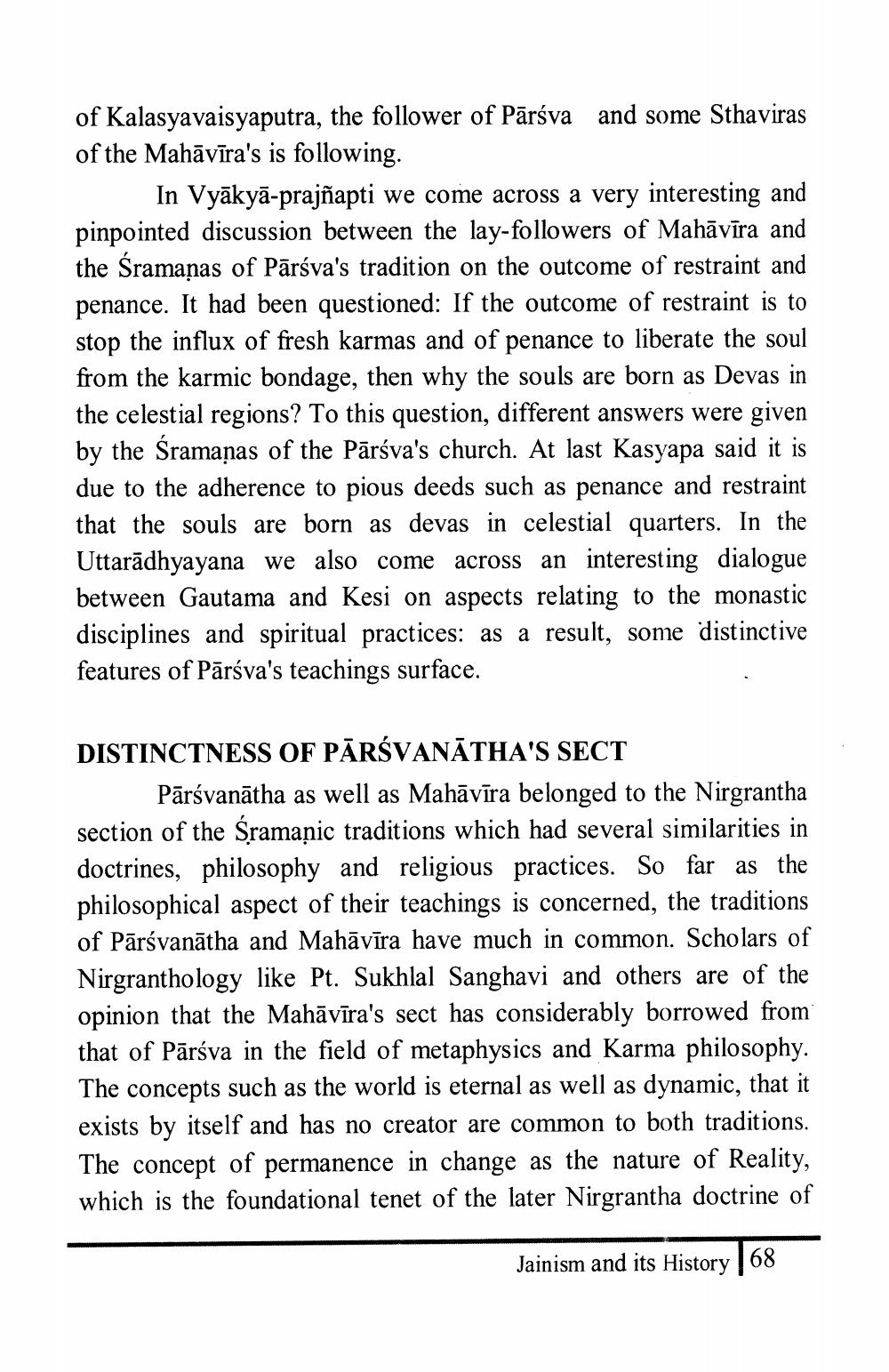________________
of Kalasyavaisyaputra, the follower of Pārśva and some Sthaviras of the Mahāvīra's is following.
In Vyākya-prajñapti we come across a very interesting and pinpointed discussion between the lay-followers of Mahāvīra and the Śramaņas of Pārsva's tradition on the outcome of restraint and penance. It had been questioned: If the outcome of restraint is to stop the influx of fresh karmas and of penance to liberate the soul from the karmic bondage, then why the souls are born as Devas in the celestial regions? To this question, different answers were given by the Śramanas of the Pārsva's church. At last Kasyapa said it is due to the adherence to pious deeds such as penance and restraint that the souls are born as devas in celestial quarters. In the Uttaradhyayana we also come across an interesting dialogue between Gautama and Kesi on aspects relating to the monastic disciplines and spiritual practices: as a result, some distinctive features of Pārsva's teachings surface.
DISTINCTNESS OF PĀRSVANĀTHA'S SECT
Pārśvanatha as well as Mahāvīra belonged to the Nirgrantha section of the Śramanic traditions which had several similarities in doctrines, philosophy and religious practices. So far as the philosophical aspect of their teachings is concerned, the traditions of Pārsvanatha and Mahāvīra have much in common. Scholars of Nirgranthology like Pt. Sukhlal Sanghavi and others are of the opinion that the Mahāvīra's sect has considerably borrowed from that of Parsva in the field of metaphysics and Karma philosophy. The concepts such as the world is eternal as well as dynamic, that it exists by itself and has no creator are common to both traditions. The concept of permanence in change as the nature of Reality, which is the foundational tenet of the later Nirgrantha doctrine of
Jainism and its History 68




